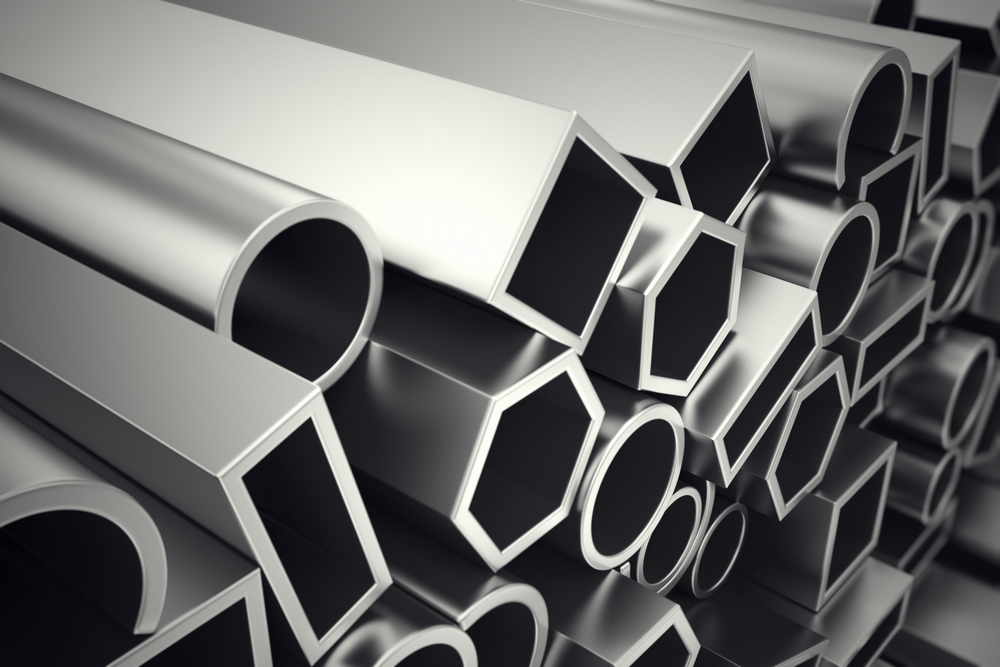Steel that has been alloyed with a range of elements in total amounts ranging from 1.0 percent to 50 percent by weight to improve its mechanical qualities is known as alloy steel. Alloy steels are divided into two categories: high-alloy steels and low-alloy steels.
Low alloy steels have a total alloying element content of less than 5%.
High alloy steels are those in which the total amount of alloying elements is greater than 5%.
Alloy Steel’s Applications
Alloy steel is mostly used in the automobile and equipment industries. Alloy steel can be utilized in areas where carbon steel has limitations. Here are a few examples of alloy steel applications:
Heater tubes and Alloy Steel Boiler Tubes are examples of high-temperature services.
Cryogenic application and other low-temperature services
Steam Header, for example, is a very high presser service.
Crankshafts, camshafts, and propellor shafts, among other things, are used in the construction of aircraft and heavy vehicles.
Mold and general engineering are the foundations.
What is high-alloy steel, and how does it work?
High alloy steel is an iron alloy with a chromium content of 10.5 percent. A ten percent alloy combination is also included in high alloy steel. The latent layer is a thin coating of oxide formed by chromium on the steel’s surface. It’s also less expensive than low-alloy steel. A high degree of carbon and manganese is added to the steel to give it an austenitic character. The increasing amount of chromium provides increased erosion resistance. Because of its high chromium content, high alloyed steel can prevent consumption. Manganese, silicon, and carbon restrictions are also present in high alloy steel. It’s used to help with extremely hot gases and fluids on various components at high temperatures. Molybdenum and nickel, for example, can be added to provide additional benefits such as improved formability and increased consumption protection.
Grades:
ASTM A335 Gr P1, P5, P11, P22, P9, and P91 Pipes ASTM A335 Gr P1, P5, P11, P22, P9, and P91 Pipes
WP5, WP9, and WP11 ASTM A234 Fittings
ASTM A182 Forging, Flanges, and Forged Fittings (F5, F9, F11)
What is low alloy steel, and how does it differ from other steels?
Low alloy steel is a type of steel that has less than 10.5 percent nitrogen, chromium, and other alloy elements. The low alloy steel has a chromium content of 0.5 percent to 9% and a molybdenum content of 0.5 percent to 1%. It has a carbon content of less than 0.20 percent, and due to its alloy feature, it has a greater hardening ability and decent weldability. Chromium improves low alloy steel’s anti-oxidation and corrosion resistance, whereas molybdenum increases its strength at high temperatures. The typical steel will have higher strength but poorer toughness and elongation in a low-temperature environment, increasing the risk of brittle fracture. Low alloy steel is made by adding nickel to carbon steel in the proportion of 2.5-3.5 percent to increase its toughness at low temperatures. Apart from normalizing low alloy steel during the manufacturing process, quenching and tempering are also used to improve mechanical qualities.
What’s the Difference Between Low and High Alloy Steel?
Carbon steel has inferior characteristics to both low and high alloy steel. Low alloy steels have less than 0.2 percent alloying element, and high alloy steels have more than 5% alloying element. Low alloy steel comprises iron, carbon (less than 0.2 percent), and other alloying elements like Ni, Cr, Mo, V, B, W, and Cu, whereas high alloy steel contains iron, chromium, nickel, carbon, manganese, and other alloying elements.
Sort by Alloy
The kind of alloy and its concentration are frequently used to classify alloy steel. These are a handful of the most frequent alloy steel additions:
Steel is stripped of oxygen, sulphur, and phosphorus by aluminum.
Bismuth enhances the machinability of metals.
Wear resistance, hardness, and toughness are all enhanced by chromium.
Cobalt promotes the production of free graphite and improves its stability.
Copper promotes corrosion resistance and hardness.
Hardenability, ductility, wear resistance, and high-temperature strength are all enhanced by manganese.
Molybdenum reduces carbon concentration and adds strength at room temperature.
Nickel increases the strength, corrosion resistance, and oxidation resistance of a material.
Silicon improves the strength and magnetism of a material.
Titanium increases the hardness and strength of a material.
Tungsten is a mineral that increases hardness and strength.
Toughness, strength, corrosion resistance, and shock resistance are all enhanced by vanadium.
The function of alloying elements
The following material qualities are modified by the amount of alloying elements present:
Resistance to corrosion
Hardenability
Machinability
Stability at high or low temperatures
Ductility
Toughness
Wear resistance is improved.
The weldability has been improved.
Is alloy steel or carbon steel more durable?
Carbon steel, which is classified as alloy steel, is not stainless steel. Through the application of heat treatments, the carbon content of the steel is raised, making it harder and stronger. The inclusion of carbon, on the other hand, makes the steel less ductile.
What does “non-alloy steel” mean?
These steels are distinguished primarily by their mechanical qualities of use. Non-alloy or alloy steels containing boron, manganese, silicium, nickel, chromium, molybdenum, or a mixture of these metals are the most common.
What are the many alloy steel types?
However, “alloy steel” is the common word for steels that have other alloying elements added to them in addition to the carbon. Manganese (the most common alloyant), nickel, chromium, molybdenum, vanadium, silicon, and boron are all common alloys.
What is the strength of alloy steel?
Stainless steel is a metal that is corrosion-resistant. A corrosion-resistant metal with a yield strength of up to 1,560 Mpa and tensile strength of up to 1,600 Mpa is made from a steel, chromium, and manganese alloy. This alloy, like all varieties of steel, is highly impact resistant and ranks in the middle of the Mohs scale.


Recent Comments